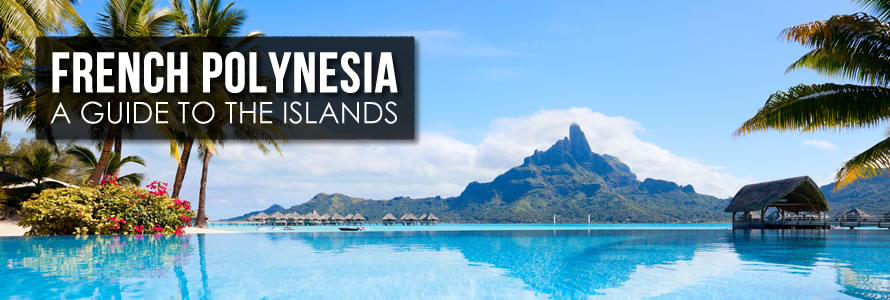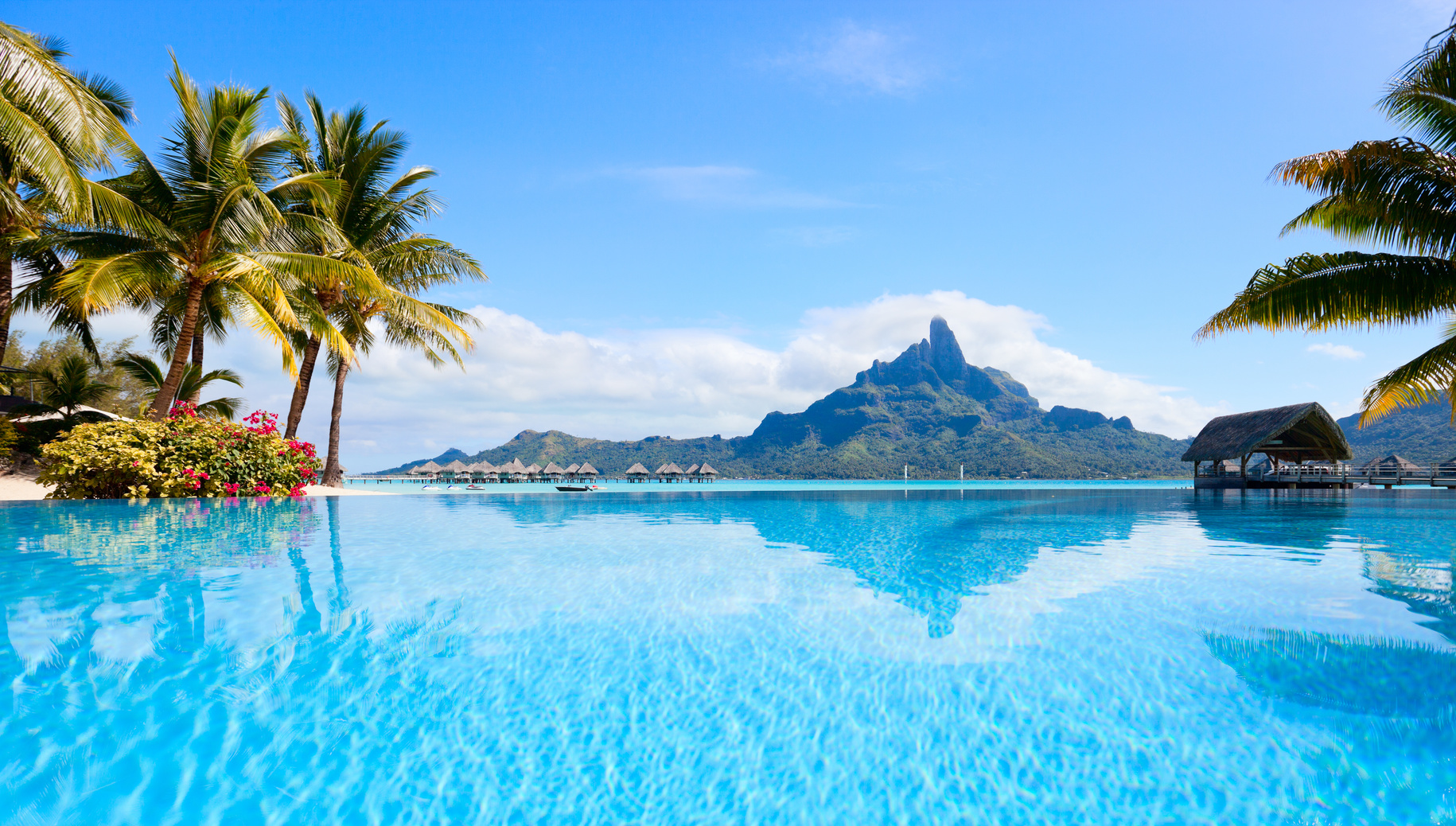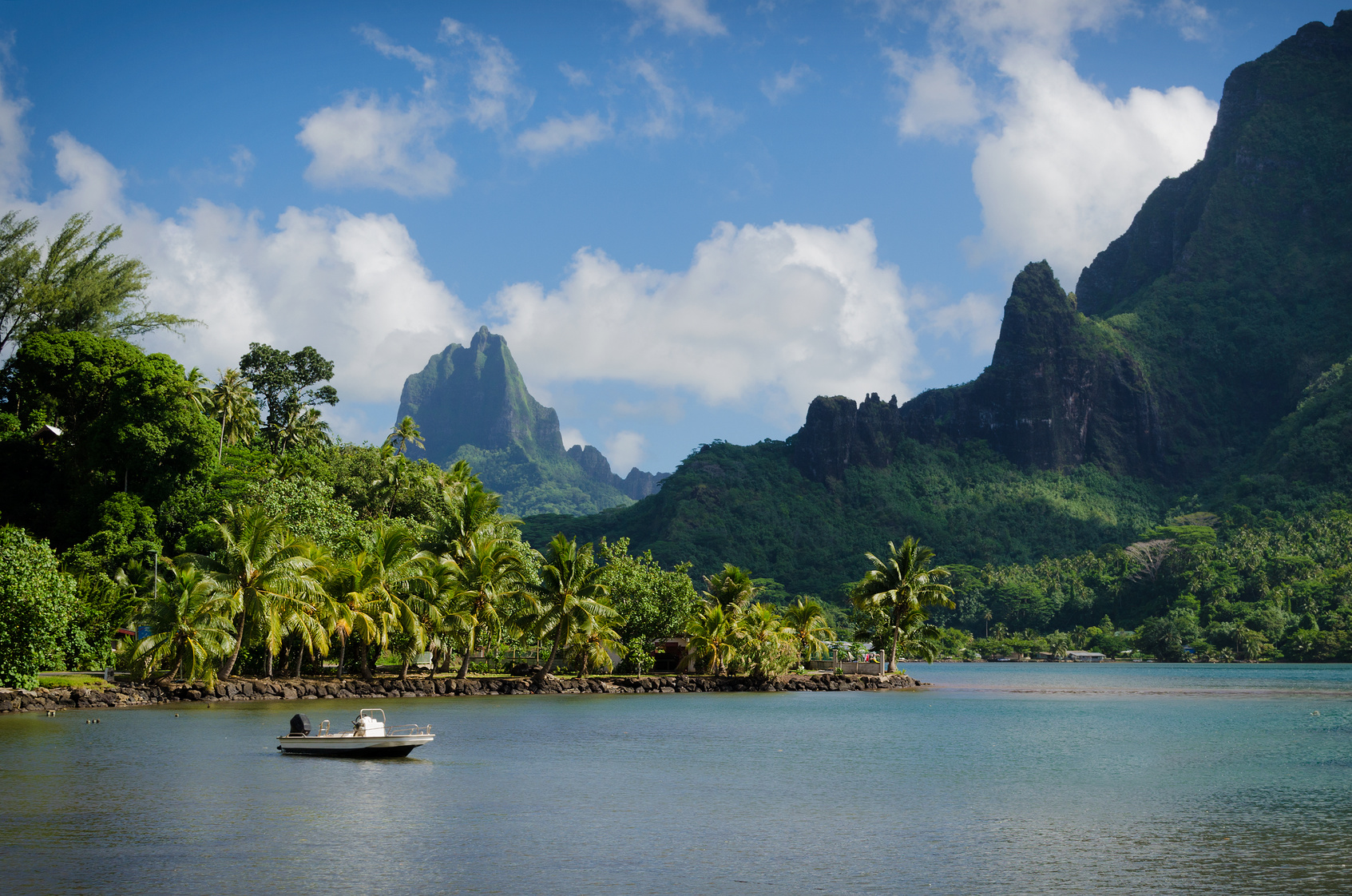Coconut palms gently nodding in the warm breeze, sparklingly clear turquoise lagoons lapping onto white sand beaches as soft as talcum powder and exotic blooms filling the air with their scent. These are the images most associate with the idyllic tropical islands of French Polynesia and quite right – all of this is here in abundance. Away from the obvious pull of the dream-like beaches and the coral gardens though are other things which add greatly to the charm of these 118 islands sitting in the middle of nowhere in the Pacific Ocean.
Interestingly, although French Polynesia – sometimes just referred to as the island of Tahiti – covers a vast area of ocean made up of five totally separate island groups, the majority of its inhabitants live on either the island of Tahiti or Mo’orea. Of course Polynesians had inhabited these island paradises long before the Europeans arrived. Many ancient sites still remain today as evidence of this habitation while certain eons-old Polynesian traditions such as dancing, music and hand-craft techniques are still very much alive today.
The melding of these two cultures has sculpted French Polynesia into what it is today. The result of which is a laid-back island culture, the famed Tahitian warmth and welcome, great food and the opportunity of once-in-a-lifetime experiences such as snorkelling with whales or diving with sharks. Little wonder many view French Polynesia as nothing short of tropical perfection.
The Islands at a Glance
The islands of French Polynesia are grouped into five archipelagos. Although each offer significantly different things there also tends to be certain common factors throughout such as pure paradise palm-fringed beaches of pink, white or black sands. Also something of a theme are the idyllic coral gardens so beloved of snorkelers and divers which form circles of reef around the islands. These give rise to the ultimate outdoor swimming pools crafted by the hands of Mother Nature – the island’s famed limpid lagoons which range in colour from a hint of turquoise to sapphire.
1) The Society Islands
This coral reef-encircled group of islands is further subdivided into the Windward Islands and the Leeward Islands and collectively represents the most populated region of French Polynesia.
Windward Islands
Tahiti – Culturally fascinating and home to the French Polynesian capital of Papeete, Tahiti is the largest of the French Polynesian islands by quite some margin. More than half of all French Polynesians live here.
Mo’orea – A favourite honeymoon island of idyllic lagoons and talcum powder sands as well as a lush interior and a total of eight mountains. Considerably less touristy than Tahiti which lies just 20 km away, Mo’orea still has plenty of activities on the menu which include hiking, whale-watching, kayaking, skydiving, 4×4 safaris and horse riding.
Other islands in the group – Mehetia, Tetiaroa, Maiao.
Leeward Islands
Bora Bora – A stunning rainforest-cloaked tropical island which has become something of a playground for the rich and famous with most of the accommodation in the luxury and uber-luxury categories and plentiful over-the-water beach bungalows.
Huahine – Tranquil and tropically lush Huahine is an island which becomes two islands at high tide, joined by way of a bridge. Little Huahine, which lies to the south of Big Huahine, has the most isolated and secret hideaway feel of the two. There are plenty of things to see and do, especially on Big Huahine.
Maupiti – With all of Bora’s Bora’s natural charm but rather more of an option for those on lower budgets, virtually car-free Maupiti was once a well-kept secret. Today it is still a lazy-vibe hideaway amid an aqua-hued lagoon and abundant coral gardens but now offers a good-range of family run pensions and a good smattering of activities.
Raiatea – With a large encircling lagoon which cradles fellow island Tahaa in its arms, Raiatea is one of French Polynesia’s main sailing, fishing and diving locations. Enshrouded in myths and dotted about with leftovers of Polynesian inhabitants of long ago – including a large ‘marae’ archaeological site – Raiatea is the most populated island in the Leeward group.
Other islands in the group – Tahaa, Tupai, Manuae, Maupihaa, Motu One.
2) The Tuamotu Islands
With approximately 80 low lying islands and coral atolls, the Tuamotu Islands represent the largest atoll chain on the planet and covers a vast area of ocean. Its main islands are:
- Anaa
- Fakarava
- Hao
- Makemo
All of the above tend to offer the ultimate in tropical idyll getaways, otherwise many of the islands and islets of Tuamotu are uninhabited.
Rangiroa – Consisting of more than 400 islets, reef islets and sandbars, Rangiroa is the largest of the Tuamotus atolls (and also one of the world’s largest) and has a population of around 2, 500 people. Rangiroa consistently appears in ‘best dive sites in the world’ lists with the passes into the lagoon offering idyllic scuba locations.
3) The Marquesas Islands
Sitting in the north-eastern sector of French Polynesia, these little-visited islands offer something different besides their untamed nature. In place of lagoons and coral gardens you will find dramatic mountains of the volcanic kind rising directly from the ocean and thick jungle beyond. Along with the wild horses, also to be found here are archaeological remains, burial grounds and ancient statuary. Of the islands here only Nuku Hiva and Hiva Oa offer any accommodation.
4) The Gambier Islands
Made up of central Mangareya and her surrounding islands, this group sits at French Polynesia’s far south-eastern extreme and rarely receives visitors.
5) The Austral Islands
Far off the path-well-trodden, the slightly cooler clime Austral Islands (made up of the Tubuai and Bass Islands) form the southern tip of French Polynesia and are inhabited by around 6,600 individuals mostly going about their daily lives as artisans, fisher-folk and farmers. Polynesian culture is alive and kicking here with the traditional skill of weaving of coconut and pandanus leaves to create hats, bags and mats a speciality.
One of the Austral Islands’s main drawing card is the presence of whales at certain times of year with whale-watching boat trips an essential part of any visit here.
Rurutu – As the Austral’s northern-most island, Rurutu is perhaps the archipelagos most well-known and most easily accessed spot. Full of limestone caves and incredibly fertile jungle, Rurutu boasts some white-as-it-gets sand beaches and a choice of small hotels and pensions.
Other islands in the group (which all have accommodation):
- Tubuai (the largest)
- Rimatara
- Rapa
- Raivavae



